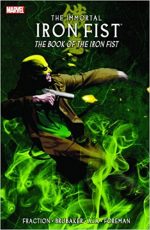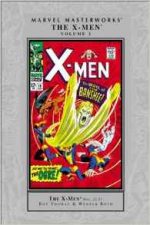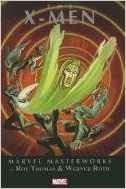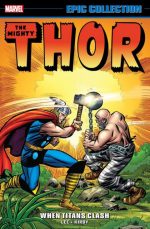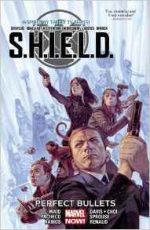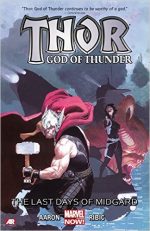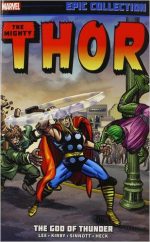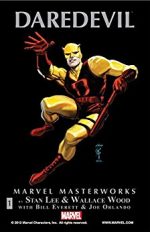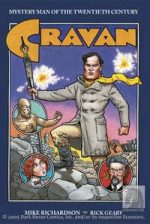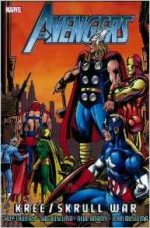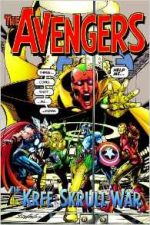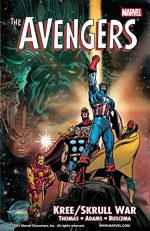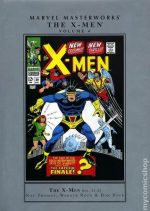
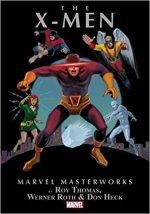
By Roy Thomas, Werner Roth, Dan Adkins, Ross Andru, Don Heck, John Tartaglione, George Tuska & various (Marvel)
ISBN: 978-0-7851-1607-3 (HC)Â Â Â Â Â Â Â Â Â Â Â Â Â Â Â Â Â Â Â :978-0-7851-5072-5 (PB)
X-Men was never one of young Marvel’s top titles but it did secure a devout and dedicated following, with the frantic, freakish energy of Jack Kirby’s heroic dynamism comfortably transiting into the slick, sleek attractiveness of Werner Roth as the blunt tension of hunted outsider kids settled into a pastiche of college and school scenarios so familiar to the students who were the series’ main audience.
The core team still consisted of tragic Scott Summers/Cyclops, ebullient Bobby Drake/Iceman, wealthy golden boy Warren Worthington/Angel and erudite, brutish genius Henry McCoy/Beast in perpetual training with Professor Charles Xavier, a wheelchair-bound (and temporarily deceased) telepath dedicated to brokering peace and integration between the masses of humanity and the emergent race of mutant Homo Superior.
By the time of this turbulent compilation (re-presenting X-Men #32-42 and spanning May 1967 to March 1968) attitudes and events from the wider world were starting to inflict an era of uncertainty on the Merry Mutants and beginning to infuse every issue with an aura of nervous tension. During those heady days, Marvel Comics had a vast following among older teens and college kids, and youthful scribe Roy Thomas spoke and wrote as they did. Coupled with his easy delight in expansive character casts this initially made X-Men a very welcoming read for we adolescent baby-boomers but with societal unrest everywhere those greater issues were beginning to be reflected in the comics…
A somewhat watered down version of the counter-culture had been slowly creeping into these tales of teenaged triumph and tragedy, mostly for comedic balance, but they were – along with Peter Parker in Amazing Spider-Man – some of the earliest indications of the changing face of America.
Illustrated by Werner Roth with John Tartaglione inking, ‘Beware the Juggernaut, My Son!’ augmented that aura of oppression and dire days ahead as Professor X is abducted by clandestine agency Factor Three and the X-Men are forced to stand alone against an unstoppable mystic monster.
The blistering battle against the Juggernaut was interrupted by a helpful guest-shot from Doctor Strange (and his mentor the Ancient One) leading to a life-saving trip ‘Into the Crimson Cosmos!’ Armed with knowledge of the nature of their enemy the mutants were able to vanquish the unstoppable Cain Marko, but when the dust settled the kids were left with almost no resources to rescue their abducted leader…
Dan Adkins – in full Wally Wood appreciation mode – memorably illustrated #34’s ‘War… In a World of Darkness!’ as the desperate team’s search for Xavier took them into the middle of a subterranean civil war between Tyrannus and the Mole Man, and he also inked Werner Roth on ‘Along Came A Spider…’
When absent ally Banshee was captured mid-sentence during a crucial communication with the X-Men, everybody’s favourite wall-crawler was mistaken for a Factor Three flunky. When the desperate and distraught mutants found him the webslinger was forced to battle for his life against the increasingly unstable teens.
‘Mekano Lives’ (with art from Ross Andru & George Roussos, nee Bell) found the team of cash-strapped kids delayed in their attempts to follow a lead to Europe by a troubled rich kid with a stolen exo-skeleton super-suit but his defeat gave them the wherewithal needed to resume their search…
Don Heck stepped in as inker over Andru’s pencils with #37 as ‘We, the Jury…’ saw the mutants finally find Factor Three – allied to a host of their oldest and most venal mutant foes – and primed to trigger an atomic war between the Americans and Soviet Union. Heck then assumed the penciller’s role for ‘The Sinister Shadow of… Doomsday!’ (inked by Roussos), before concluding the tense Armageddon saga with good and evil mutants temporarily united against a common foe in ‘The Fateful Finale!’ (embellished by Vince Colletta).
Werner Roth had not departed the mutant melee: with issue #38 a classy back-up feature had commenced, and his slick illustration was perfect for the fascinating Origins of the X-Men series. Inked by John Verpoorten ‘A Man Called… X’ began unveiling the hidden history of Cyclops, also revealing how Xavier began his cozy relationship with human FBI agent Fred Duncan…
The second instalment ‘Lonely are the Hunted!’ displayed humanity in mob-mode as terrified citizens rioted and stalked the newly “outed†mutant Scott Summers: scenes reminiscent of contemporary race-riots that would fuel the racial outcast metaphor of the later Chris Claremont team.
Back at the front of the comicbook, Thomas, Heck and George Tuska ushered in a new era for the team with #40’s ‘The Mask of the Monster!’ as – now clad in individual costumes rather than superhero school uniforms – the young warriors tackled what seemed to be Frankenstein‘s unholy creation whilst in the second feature Scott Summers met ‘The First Evil Mutant!’
‘Now Strikes… the Sub-Human!’ and the sequel ‘If I Should Die…’ introduced the tragic Grotesk, whose only dream was to destroy the entire planet, and who instituted the greatest and most stunning change yet.
I’m spoiling nothing now but when this story first ran, the shock couldn’t be described when the last page showed the heroic, world-saving death of Charles Xavier. I’m convinced that at the time this was an honest plot development – removing an “old†figurehead and living deus ex machina from a “young†series – and I’m just as certain that his subsequent “return†a few years later was an inadvisable reaction to dwindling sales…
From the rear of those climactic issues ‘The Living Diamond!’ and ‘The End… or the Beginning?’ (this last inked by neophyte Herb Trimpe) signalled the beginning of The Xavier School for Gifted Children as solitary recluse Professor X took the fugitive Scott under his wing and began his Project: X-Men…
These tales perfectly display Marvel’s evolution from quirky action tales to the more fraught, breast-beating, convoluted melodramas that inexorably led to the monolithic X-brand of today. Well drawn, highly readable stories are never unwelcome or out of favour though, and it should be remembered that everything here informs so very much of today’s mutant mythology. These are stories for the dedicated fan and newest convert, and never better packaged than in this wide range (hardback, softcover and eEditions) of releases. Every comics fan should own this book, so do…
© 1967, 1968, 2012 Marvel Characters, Inc. All rights reserved.

